Alam mo yung feeling na hindi ka mahilig sa sashimi at raw fish pero gusto mo pa rin ma-enjoy ang premium taste ng tuna belly? That was me before I discovered this life-changing Inihaw na Tuna Belly recipe.
As someone who grew up in a typical Filipino household where grilling is our go-to way of cooking fish (kasi sino ba naman ang kumakain ng hilaw na isda, 'di ba?), this recipe became my absolute favorite way to enjoy tuna.
Every time I make this, naalala ko 'yung mga weekend family gatherings namin kung saan ang bango-bango ng amoy ng inihaw mula sa kalsada hanggang sa loob ng bahay. The perfectly grilled, smoky tuna belly, with its melt-in-your-mouth tenderness and just the right balance of sweet, savory, and citrusy flavors from our marinade, will make you forget about expensive Japanese restaurants.
Once you try this grilled tuna belly recipe, maiintindihan mo kung bakit ang daming Pinoy ang obsessed sa inihaw na tuna belly - it's restaurant quality na pwedeng-pwede mong gawin sa bahay.
Jump to:
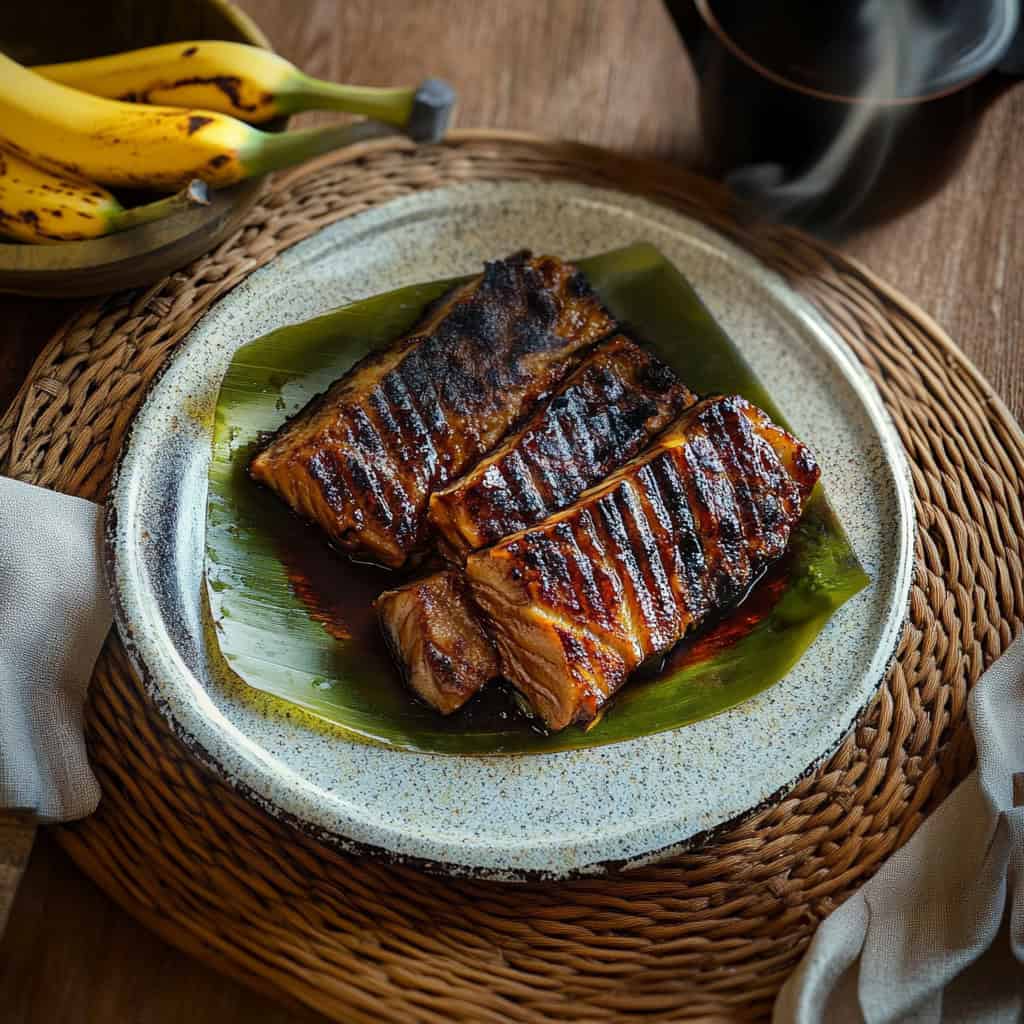
Why You'll Love This Recipe
- Restaurant Quality: Achieve the same tender, smoky flavor you'd pay premium for
- Foolproof Method: Step-by-step instructions ensure perfect results every time
- Budget-Friendly Luxury: Make a high-end dish at a fraction of restaurant prices
- Versatile: Works great for both casual family dinners and special occasions
- Health Benefits: Rich in omega-3 fatty acids and protein
- Make-Ahead Friendly: Can be marinated overnight for better flavor
Ingredients
This recipe combines ingredients that perfectly complement the rich, buttery texture of tuna belly. The acidity from lemon juice tenderizes the fish while balancing its natural fattiness.
Garlic provides aromatic depth, while sweet chili sauce creates a caramelized exterior when grilled. Oyster sauce adds umami richness, and sesame oil brings a nutty undertone that enhances the fish's natural flavors.
The simple addition of salt and pepper ensures all these flavors are properly highlighted without overwhelming the star ingredient – the premium tuna belly itself.
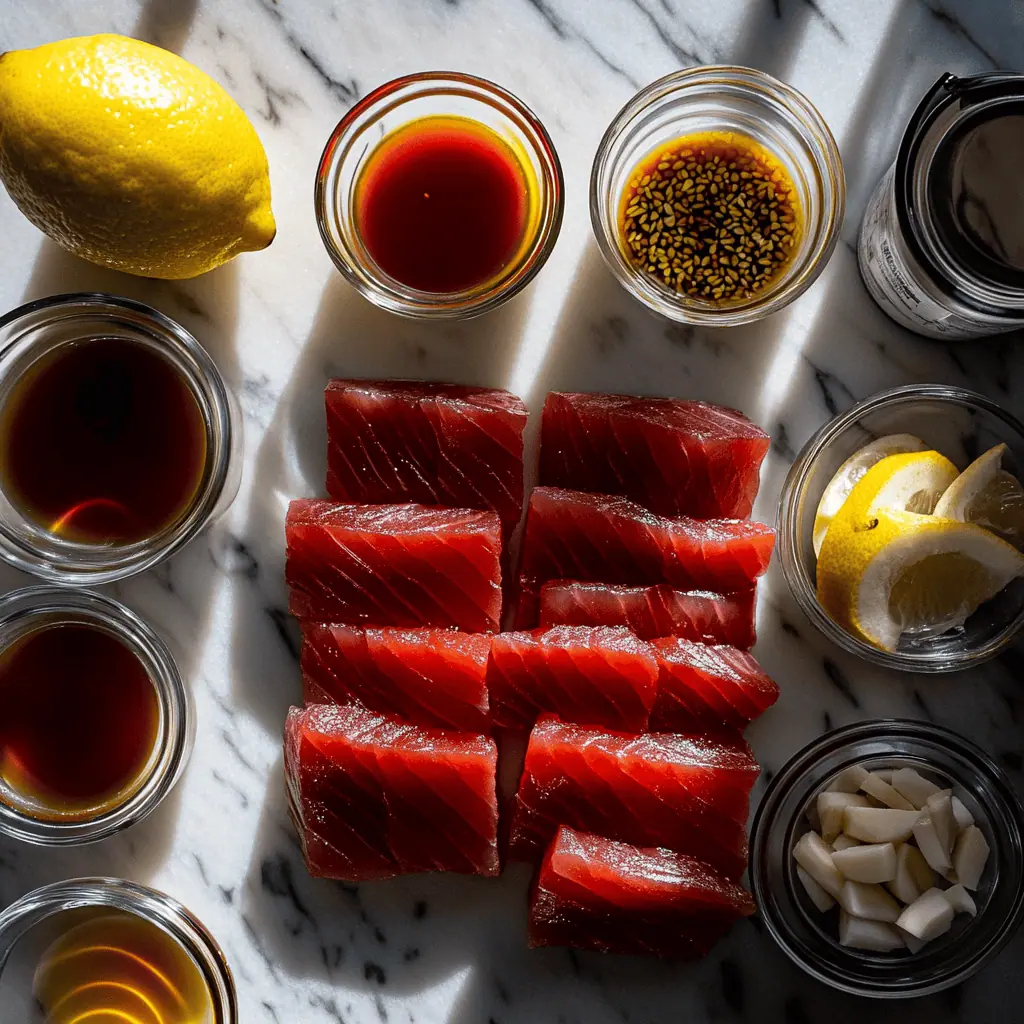
- 2 pounds tuna belly (tiyan ng tuna), cut into serving portions
- Juice of 1 lemon (katas ng 1 lemon)
- 2 cloves garlic, minced (2 bawang tinadtad)
- ½ cup sweet chili sauce (sili sauce)
- 2 tablespoons oyster sauce
- 1 tablespoon sesame oil
- ¼ teaspoon ground black pepper (dinurog na paminta)
- ½ teaspoon salt (asin)
Equipment
- Charcoal Grill (Ihawan) - Provides the authentic smoky flavor that defines traditional inihaw. Gas grills work too but won't deliver the same smoky complexity.
- Mixing Bowl (Mangkok) - For preparing the marinade and coating the fish evenly.
- Basting Brush - Essential for applying marinade during grilling without losing precious flavor.
- Tongs - Allows you to flip and handle the delicate tuna belly without piercing it and losing juices.
- Aluminum Foil - Used to create a resting tent after grilling to keep fish warm and allow juices to redistribute.
- Meat Thermometer (Optional) - For precise cooking, especially helpful for beginners to ensure fish reaches 145°F (63°C) without overcooking.
- Container for Marinating - A shallow, non-reactive container (glass or food-grade plastic) that allows fish to be fully submerged in marinade.
- Small Saucepan - For reducing excess marinade into a flavorful basting sauce, ensuring no flavor is wasted.
- Spray Bottle - Filled with water to control flare-ups during grilling without dramatically reducing grill temperature.
- Sharp Knife - For scoring the skin and portioning the tuna belly before grilling.
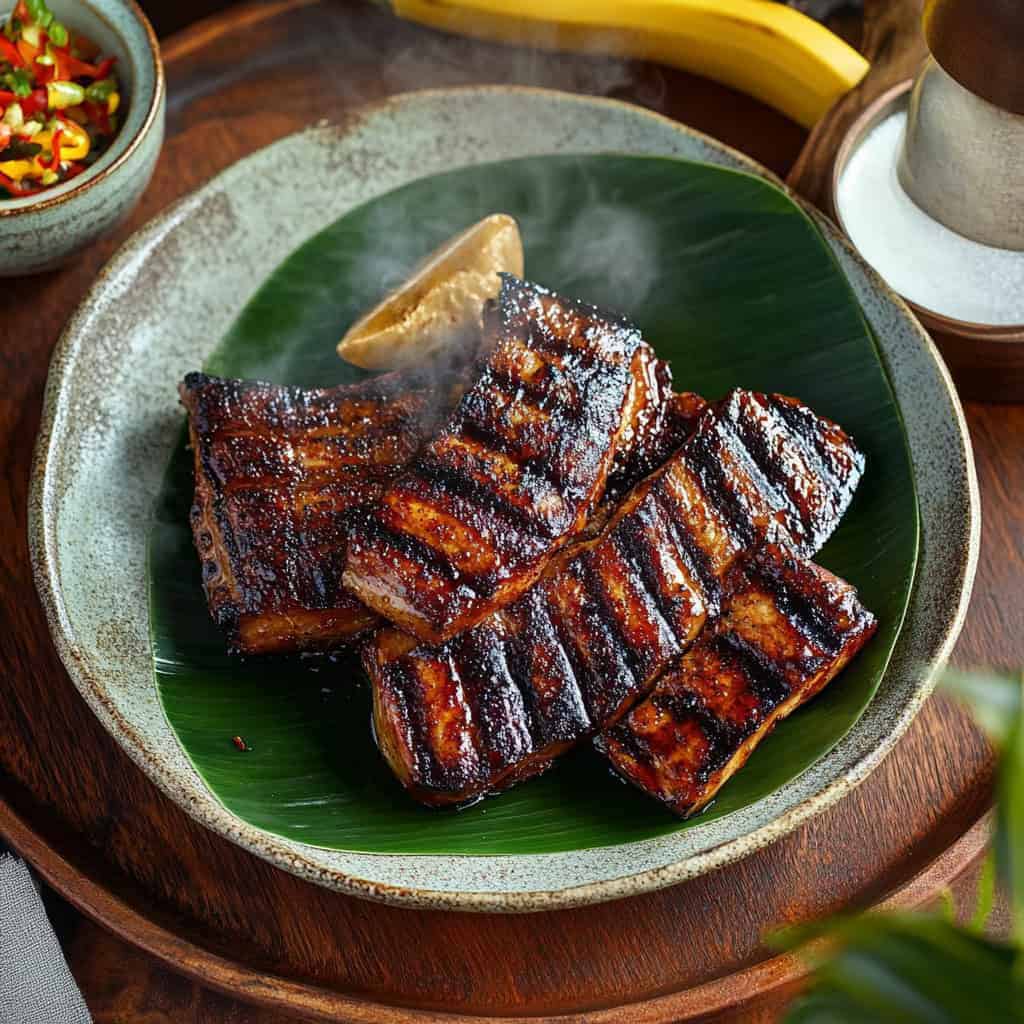
How To Make
- Clean the tuna belly thoroughly under cold running water and pat it completely dry using paper towels. Using a sharp knife, create shallow diagonal cuts on the skin side, being careful not to cut too deep into the flesh.
- In a large mixing bowl, combine the juice of one lemon, minced garlic, sweet chili sauce, oyster sauce, sesame oil, ground black pepper (dinurog na paminta), and salt (asin). Mix these ingredients well until fully combined (haluing mabuti).
- Place your tuna belly pieces in a shallow container and pour the marinade over them, making sure each piece is well-coated. Cover the container and place it in the refrigerator for 8 hours or overnight. For best results, turn the fish pieces every 2-3 hours to ensure even marination.
- Remove the tuna from the refrigerator 30 minutes before cooking to allow it to come to room temperature. This ensures even cooking.
- Prepare your charcoal grill (ihawan) and wait until it reaches a temperature of 375°F (190°C). If you don't have a thermometer, hold your hand 6 inches above the grill - you should only be able to keep it there for 3-4 seconds.
- While waiting for the grill to heat, transfer the remaining marinade to a small saucepan. Bring it to a boil and simmer for 5 minutes, then set aside for basting.
- Once the grill is hot, clean the grates thoroughly and oil them well to prevent sticking (lagyan ng mantika ang ihawan para hindi dumikit). Place the tuna belly pieces on the grill at a 45-degree angle to create attractive grill marks.
- Grill each side for 4-5 minutes at 350-375°F (175-190°C). Baste the fish with the reduced marinade every 2 minutes using a brush. Watch for flare-ups caused by dripping marinade - keep a spray bottle of water nearby to control them if needed.
- The tuna belly is done when it reaches an internal temperature of 145°F (63°C). If you don't have a thermometer, check that the fish flakes easily with a fork but still remains moist. The color should change from translucent to mostly opaque, with the center remaining slightly pink but not raw.
- Once cooked, remove the tuna from the grill and let it rest for 5 minutes. This allows the juices to redistribute throughout the fish, ensuring each bite is moist and flavorful.
- Serve hot with your choice of steamed rice, ensaladang mangga, or grilled vegetables. Prepare a dipping sauce of spiced vinegar or toyomansi on the side. Garnish with calamansi or lemon wedges if desired.

Tips from Lola's Kitchen
- Fish Selection: Choose tuna belly with a good balance of fat and lean meat. The fat should be translucent, not yellow, and the meat should be bright red without any brown discoloration.
- Freshness Test: Press your finger against the fish - it should spring back immediately. If it leaves an indentation, it's not fresh enough for this premium dish.
- Scoring Technique: When making diagonal cuts on the skin, use the tip of the knife at a 45-degree angle and space cuts about 1 inch apart. This allows marinade to penetrate deeper while preventing curling during grilling.
- Marinade Rest: After mixing your marinade, let it sit for 15 minutes before using to allow flavors to meld together.
- Overnight Magic: For the best flavor, marinate overnight (12-24 hours) and turn the fish every 4-6 hours for even flavor distribution.
- Charcoal Selection: Use hardwood charcoal rather than briquettes for a cleaner, more authentic flavor. Lola recommends adding a small piece of soaked santol or calamansi wood for additional fragrance.
- Temperature Control: Maintain medium-high heat throughout cooking. Too hot and the outside burns before the inside cooks; too cool and you lose the caramelization.
- The 8-Minute Rule: For 1-inch thick tuna belly pieces, follow the 8-minute rule (4 minutes per side) for perfect doneness.
- Rest Before Serving: Always let the fish rest under a loose foil tent for 5 minutes before serving - this is non-negotiable for juicy results!
Substitutions
- Tuna Belly → Salmon Belly: Has similar fat content and works beautifully with the same marinade. Cook for 1 minute less per side.
- Tuna Belly → Swordfish Steak: A firmer alternative that holds up well on the grill. Increase marinade time to 12 hours for better flavor penetration.
- Sweet Chili Sauce → Honey + Sriracha: Mix ¼ cup honey with 1-2 tablespoons sriracha for a similar sweet heat profile.
- Oyster Sauce → Hoisin Sauce: Adds similar complexity but with a slightly sweeter profile. Use the same amount.
- Oyster Sauce → Soy Sauce + Brown Sugar: Mix 1.5 tablespoons soy sauce with ½ tablespoon brown sugar for a quick alternative.
- Sesame Oil → Extra Virgin Olive Oil + Toasted Sesame Seeds: While you'll miss some flavor depth, 1 tablespoon olive oil plus 1 teaspoon toasted and crushed sesame seeds provides a workable alternative.
- Fresh Lemon → Lime or Calamansi: These citrus alternatives offer a different but equally delicious brightness to the marinade.
- Charcoal Grill → Oven Broiler: Place fish on the highest rack position, 4-5 inches from the heating element, and broil for 4-5 minutes per side.
Troubleshooting
Fish Sticking to Grill
- Problem: Tuna belly pieces tear apart when you try to flip them.
- Solutions:
- Ensure grill grates are impeccably clean and well-oiled before cooking
- Pat fish completely dry before placing on grill
- Don't try to flip too early - the fish will naturally release when ready (usually after 3-4 minutes)
- Use a thin, wide spatula in addition to tongs for delicate flipping
Too Much Charring
- Problem: Outside is blackened while inside remains undercooked.
- Solutions:
- Lower grill temperature or raise the grill rack further from coals
- Start basting only after the first flip to prevent sugar in marinade from burning
- Create a cool zone on your grill for moving fish if hot spots develop
- Reduce sweet chili sauce in marinade by 1-2 tablespoons
Dry, Overcooked Fish
- Problem: Tuna belly lacks the signature moisture and tenderness.
- Solutions:
- Use a meat thermometer and remove fish at exactly 145°F
- Remember fish continues cooking after removal - pull it slightly earlier
- Maintain proper marination time - at least 8 hours
- Allow fish to come fully to room temperature before grilling
- Don't skip the 5-minute resting period
Bland Flavor
- Problem: Fish lacks the depth of flavor despite marination.
- Solutions:
- Increase marination time to 24 hours
- Make small incisions in the flesh side as well as the skin side
- Add 1 tablespoon of fish sauce to the marinade for umami boost
- Ensure marinade is well-reduced before using as basting sauce
- Season with a final light sprinkle of sea salt just before serving
Flare-Ups During Grilling
- Problem: Constant flames causing uneven cooking and burnt spots.
- Solutions:
- Let excess marinade drip off before placing on grill
- Keep spray bottle ready to target specific flare-ups without cooling entire grill
- Create a small foil drip pan under the fish to catch drippings
- Apply basting sauce more sparingly and less frequently
Storage & Reheating
Refrigeration
- Allow grilled tuna to cool completely before refrigerating (no more than 30 minutes at room temperature)
- Store in an airtight container, separating layers with parchment paper
- Keeps well for up to 3 days
- For best flavor, store with a slice of lemon and a few drops of olive oil to maintain moisture
Freezing
- While not ideal, grilled tuna belly can be frozen for up to 1 month
- Wrap individual portions tightly in plastic wrap, then place in a freezer bag with air removed
- Label with date and contents
- Thaw overnight in refrigerator before reheating
Reheating Methods (In Order of Preference)
- Gentle Oven Method (Best):
- Preheat oven to 275°F (135°C)
- Place fish on a baking sheet
- Add 1-2 tablespoons of water to the pan and cover loosely with foil
- Heat for 10-15 minutes until just warmed through
- Stovetop Steaming:
- Place a steamer basket over simmering water
- Lay fish in basket and cover
- Steam for 3-5 minutes until just heated through
- Microwave (Quick But Not Ideal):
- Place fish on a microwave-safe plate
- Cover with a damp paper towel
- Heat in 30-second intervals at 50% power
- Check temperature after each interval to prevent overcooking
- Room Temperature (For Purists):
- For highest quality, enjoy leftover tuna belly at room temperature in a salad or sandwich
- Remove from refrigerator 30 minutes before serving
Pro Tip: Regardless of reheating method, drizzle with a little fresh lemon juice and olive oil after reheating to refresh flavors.
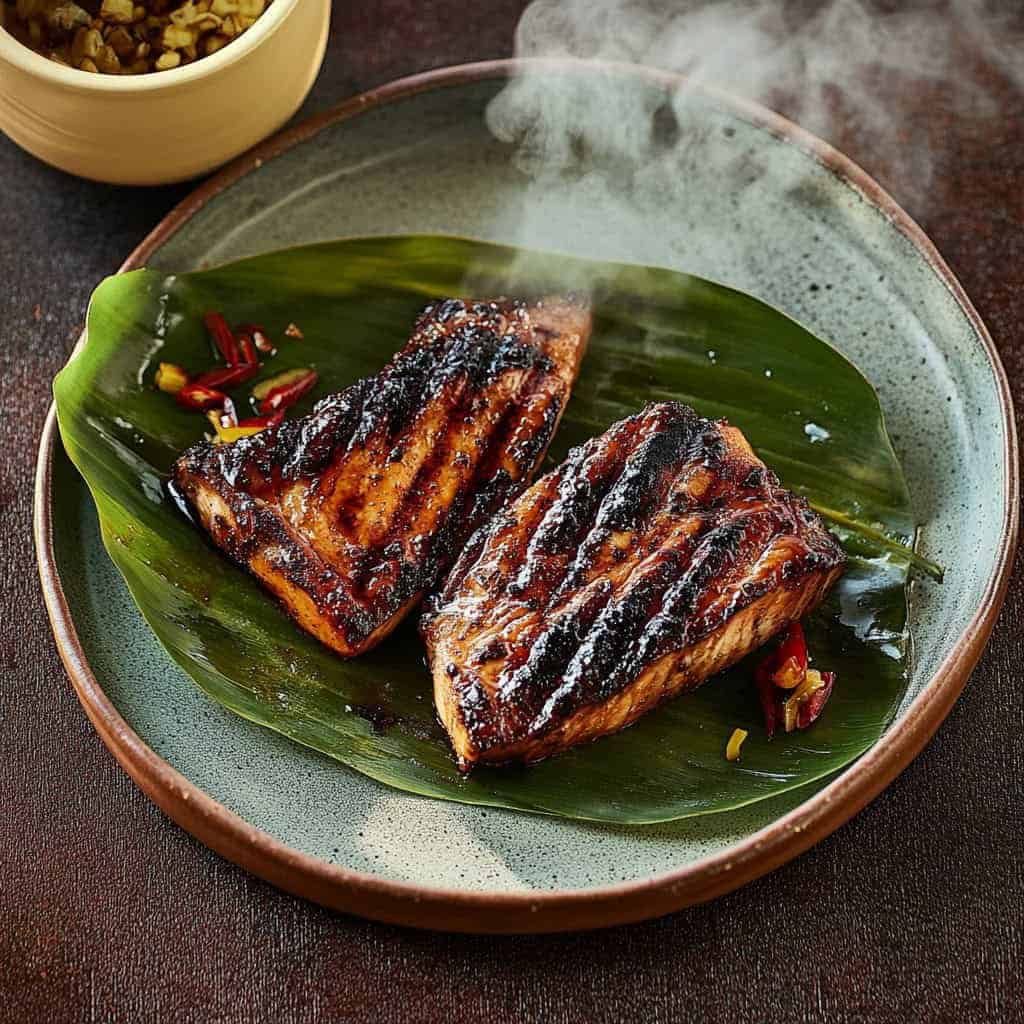
FAQ
Can I use frozen tuna belly?
Yes, but the quality won't match fresh. If using frozen, thaw completely in the refrigerator (never at room temperature), pat thoroughly dry, and marinate for the full 24 hours to improve flavor absorption. You may need to adjust cooking time slightly as previously frozen fish often cooks faster.
How do I know when the fish is perfectly done?
The tuna belly should register 145°F on an instant-read thermometer. Without a thermometer, look for these signs: the fish should flake easily with a fork but still remain moist, the color should change from translucent to mostly opaque with the center remaining slightly pink (but not raw), and the fish should feel firm but still yield to gentle pressure.
Can I make this in the oven or on a stovetop grill pan?
Yes! For oven preparation, broil on high 4-5 minutes per side, positioning the rack about 6 inches from the heating element. For a stovetop grill pan, heat to medium-high, add a little oil, and cook for 4-5 minutes per side. While both methods work, you'll miss some of the smoky flavor that makes traditional inihaw special.
Is this recipe keto-friendly?
Almost! The sweet chili sauce contains sugar that isn't keto-compatible. Substitute with 2 tablespoons of sugar-free maple syrup mixed with 1 teaspoon of red pepper flakes and 1 tablespoon of rice vinegar. With this modification, the recipe becomes keto-friendly while maintaining a similar flavor profile.
Can I make extra marinade for dipping?
Absolutely, but NEVER use the same marinade that touched raw fish. Instead, prepare a double batch of marinade at the beginning and set half aside for serving. Simmer the reserved portion for 5 minutes, allow to cool, then serve as a dipping sauce. Alternatively, try a classic Filipino sawsawan of ¼ cup vinegar, 1 minced bird's eye chili, 1 minced garlic clove, and a pinch of salt.
How can I tell if tuna belly is fresh at the market?
Look for these signs of freshness: bright red flesh without browning, clear eyes if buying whole fish, clean ocean smell without fishiness, firm texture that springs back when pressed, translucent (not yellow) fat, and moist but not slimy surface. When in doubt, ask your fishmonger when it was delivered.
Can I cook this for a large party in advance?
Yes, with proper planning. Marinate the fish up to 24 hours ahead, and you can grill it up to 2 hours before serving. After grilling, let it cool for 10 minutes, then cover loosely with foil and keep in a warm oven (170°F/77°C) until ready to serve. For best results, slightly undercook the fish initially, as it will continue to cook while being kept warm.
What side dishes pair best with Inihaw na Tuna Belly?
Traditional Filipino pairings include: ensaladang mangga (green mango salad), steamed white rice, atchara (pickled papaya), inihaw na talong (grilled eggplant), fresh tomato and onion salad with bagoong, or a simple vinegar-based slaw. For a complete Filipino feast, serve with sinangag (garlic rice) and a small bowl of sinigang on the side.
How can I add more Filipino flavors to this dish?
Enhance the Filipino profile by adding 1 tablespoon of calamansi juice to the marinade, incorporating 1 teaspoon of pounded calamansi zest, using sukang Iloco (sugarcane vinegar) instead of lemon juice, adding 1 tablespoon of muscovado sugar, or including 1-2 teaspoons of bagoong alamang (shrimp paste) to the marinade for intense umami.
Why isn't my tuna belly as tender as restaurant versions?
Restaurant-level tenderness comes from several factors: extremely fresh fish (often same-day catch), precise temperature control, and often a brief cure in salt before marinating. Try salting your tuna belly for 30 minutes before marinating, ensure you're cooking at the correct temperature, and most importantly, don't overcook - even 2 minutes too long can significantly affect tenderness.
Related
Looking for other recipes like this? Try these:
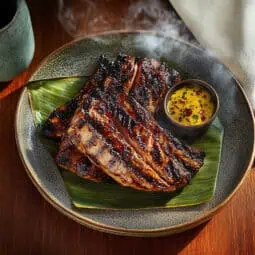
Inihaw na Tuna Belly (Grilled Tuna Belly)
Equipment
- Charcoal grill (ihawan)
- Mixing bowl (mangkok)
- Basting brush
- Tongs [Sipit]
- Aluminum foil
- Meat thermometer (optional)
- Container for marinating
- Small saucepan (for reducing marinade)
Ingredients
- 2 pounds tuna belly tiyan ng tuna, cut into serving portions
- Katas ng 1 lemon juice of 1 lemon
- 2 bawang tinadtad (2 cloves garlic, minced)
- ½ cup sweet chili sauce sili sauce
- 2 tablespoons oyster sauce
- 1 tablespoon sesame oil langis ng sesame
- ¼ teaspoon ground black pepper dinurog na paminta
- ½ teaspoon salt asin
Instructions
- Clean the tuna belly (tiyan ng tuna) thoroughly under cold running water and pat it completely dry using paper towels. Using a sharp knife, create shallow diagonal cuts on the skin side, being careful not to cut too deep into the flesh.
- In a large mixing bowl (mangkok na panghalo), combine the juice of one lemon (katas ng lemon), minced garlic (tinadtad na bawang), sweet chili sauce, oyster sauce, sesame oil ground black pepper (dinurog na paminta), and salt (asin). Mix these ingredients well until fully combined (haluing mabuti).
- Place your tuna belly pieces in a shallow container and pour the marinade over them, making sure each piece is well-coated (siguruhing nababasa ng marinade ang bawat piraso). Cover the container and place it in the refrigerator for 8 hours or overnight. For best results, turn the fish pieces every 2-3 hours (baliktarin ang tuwing 2-3 oras) to ensure even marination.
- Remove the tuna from the refrigerator 30 minutes before cooking to allow it to come to room temperature (hayaang mag-room temperature). This ensures even cooking.
- Prepare your charcoal grill (ihawan) and wait until it reaches a temperature of 375°F (190°C). If you don't have a thermometer, hold your hand 6 inches above the grill - you should only be able to keep it there for 3-4 seconds.
- While waiting for the grill to heat, transfer the remaining marinade to a small saucepan (kawaling maliit). Bring it to a boil and simmer for 5 minutes, then set aside for basting.
- Once the grill is hot, clean the grates thoroughly and oil them well to prevent sticking (lagyan ng mantika ang ihawan para hindi dumikit). Place the tuna belly pieces on the grill at a 45-degree angle to create attractive grill marks.
- Grill each side for 4-5 minutes at 350-375°F (175-190°C). Baste the fish with the reduced marinade every 2 minutes using a brush. Watch for flare-ups caused by dripping marinade - keep a spray bottle of water nearby to control them if needed.
- The tuna belly is done when it reaches an internal temperature of 145°F (63°C). If you don't have a thermometer, check that the fish flakes easily with a fork (madaling madurog gamit ang tinidor) but still remains moist. The color should change from translucent to mostly opaque, with the center remaining slightly pink but not raw.
- Once cooked, remove the tuna from the grill and let it rest for 5 minutes (palamigin ng 5 minuto). This allows the juices to redistribute throughout the fish, ensuring each bite is moist and flavorful.
- Serve hot with your choice of steamed rice (mainit na kanin), ensaladang mangga, or grilled vegetables. Prepare a dipping sauce (sawsawan) of spiced vinegar (suka na may sili) or toyomansi on the side. Garnish with calamansi or lemon wedges if desired.
- For leftovers, store in an airtight container in the refrigerator for up to 2 days. When reheating, place in a preheated 275°F (135°C) oven for 10 minutes, or until just warmed through. Avoid microwaving as this can make the fish tough and dry.
Tips from Lola's Kitchen
- Choose belly cuts with a good mix of fatty and lean meat
- Look for bright red meat with translucent fat
- The fresher the tuna, the better the result
- Don't skip the marination time
- Always bring fish to room temperature before grilling
- Clean and oil your grill grates thoroughly
Nutrition
The Story Behind Inihaw na Tuna Belly (Grilled Tuna Belly)
Long before tuna belly became a premium menu item in upscale restaurants, it was the hidden gem of Filipino coastal communities, particularly in General Santos City - the Philippines' Tuna Capital. In GenSan's bustling fish port, where massive yellowfin tuna are hauled in daily by our hardworking fishermen, the belly portion was traditionally considered "pangmahirap" (for common folk) because it was too fatty compared to the leaner, more expensive parts exported to Japan for sashimi.
But our resourceful Filipino ancestors knew better. Through the time-tested technique of inihaw (grilling), they discovered that this supposedly humble cut transforms into something extraordinary. The high fat content that made it less desirable for sashimi became its greatest asset when grilled, as the heat slowly renders the fats, creating a naturally basted, incredibly tender, and flavorful dish that's now more expensive than the prized sashimi cuts!
The evolution of Inihaw na Tuna Belly mirrors the Filipino's remarkable ability to elevate simple ingredients into extraordinary dishes. From the streets of GenSan to the barbecue stands of Davao, and eventually to the finest restaurants in Manila, this dish tells the story of how our local palate has shaped our cuisine. Today, when foreign tourists visit the Philippines, they're often surprised to learn that some of the best tuna they've ever tasted isn't raw but grilled the Filipino way - simply seasoned, perfectly charred, and always served with a tangy sawsawan that makes every bite a celebration of our local flavors.
What makes our version unique is how we've maintained the essence of traditional inihaw while adapting to modern tastes. Unlike the Japanese who prefer their tuna raw, or Western preparations that might overwhelm the fish with heavy seasonings, the Filipino way celebrates the natural flavors of tuna through careful grilling and minimal yet impactful marinades. Every Filipino family might have their own special twist - some swear by kalamansi, others by toyomansi, and many (like my Lola) insist that good quality sea salt is all you need - but the heart of the dish remains the same: premium tuna belly, charcoal grilling, and that distinctly Filipino touch that makes our cuisine special.
In many ways, Inihaw na Tuna Belly represents the best of Filipino food culture - our ability to recognize the extraordinary in the ordinary, our talent for transforming simple ingredients into sought-after dishes, and our deep understanding of how heat, smoke, and minimal seasoning can create something truly magnificent. Whether you're enjoying it at a beachside karinderia in GenSan, a family gathering in your backyard, or a high-end restaurant in the city, this dish carries with it the story of Filipino culinary innovation and the warmth of our shared food traditions.
Remember: Perfect grilled tuna belly isn't about fancy marinades or complex techniques—it's about sourcing the freshest belly cut, timing the grill perfectly, and knowing when to let the natural flavors of premium tuna speak for themselves.
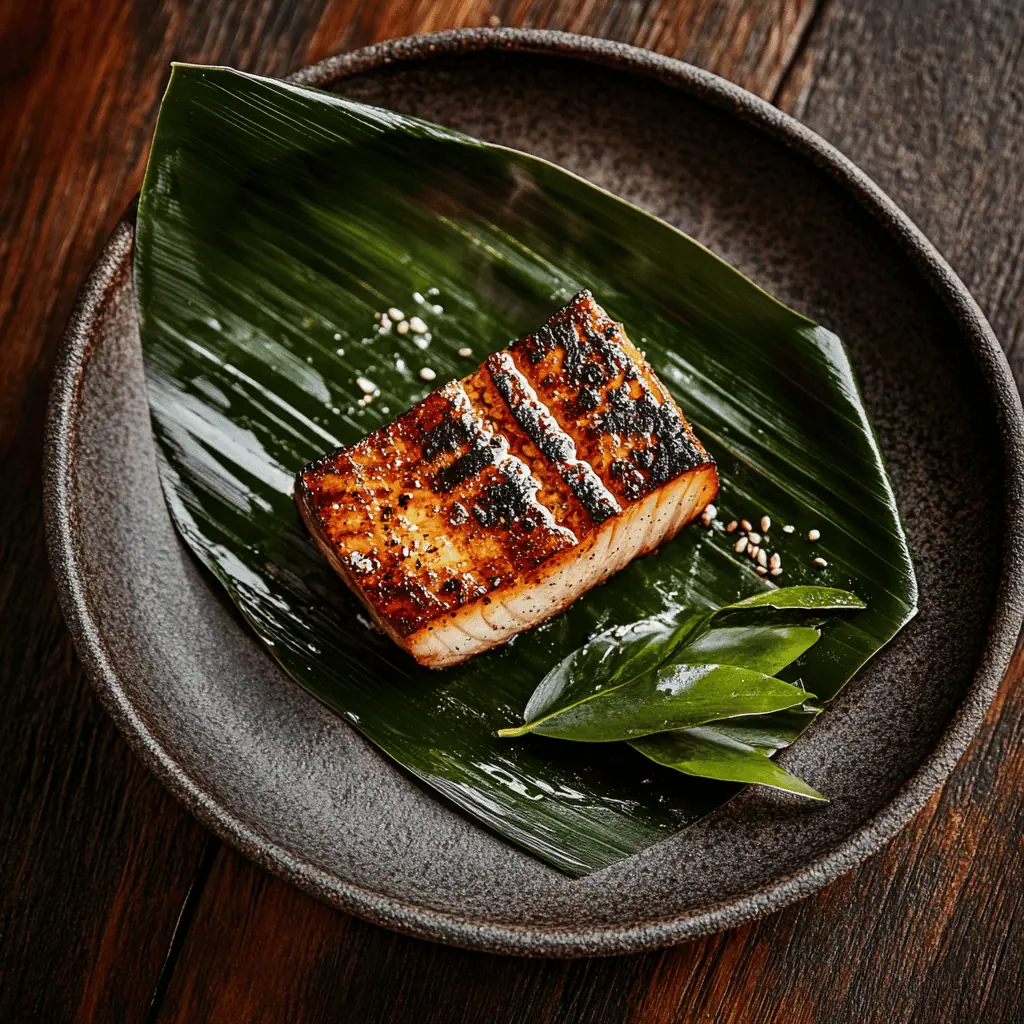









Comments
No Comments